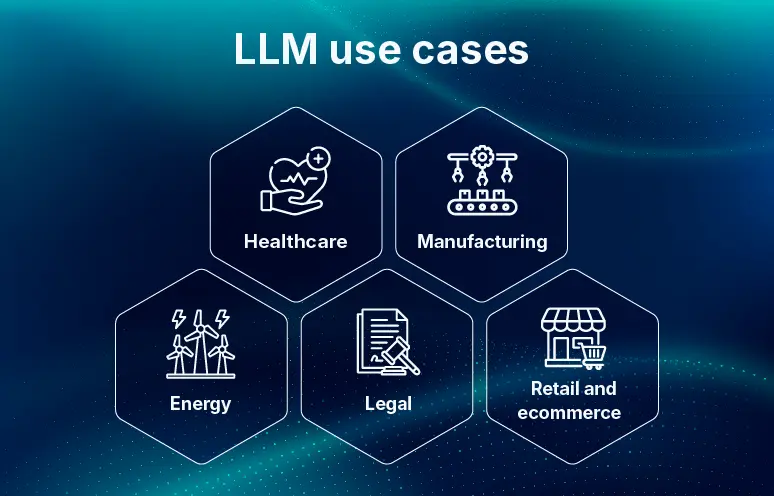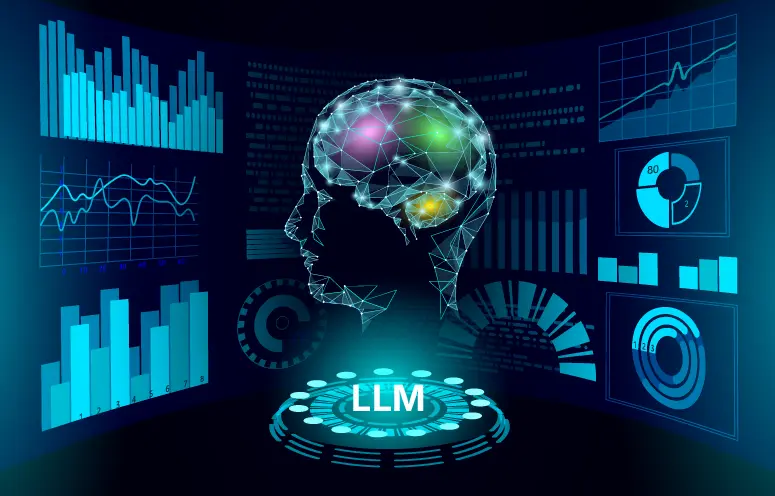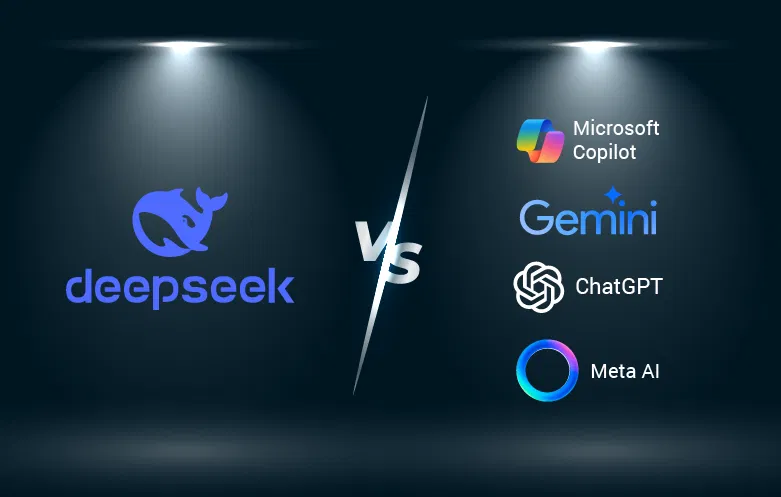Businesses are constantly seeking transformative tools that can propel them into the forefront of their respective industries in the contemporary landscape of digital innovation. This era is dominated by information and communication technologies, and the advent of large language models stands out as a pivotal moment, promising unprecedented avenues for growth and efficiency.
As organizations grapple with the challenges of data-driven decision-making, customer engagement, and content creation, leveraging large language models emerges as a strategic imperative.
As per MarketsandMarkets below are a few specifics about LLMs that make them a necessity:
- Fine-tuning and optimizing LLMs for diverse applications lead to improved accuracy and context-aware text generation.
- Customizing AI-generated content for particular industries and niches within the expansive language model market will take precedence.
- Providing users with precise control over style, tone, and other characteristics will enhance the versatility of AI-generated content, catering to the varied landscape of the LLM market.
- Ethical guidelines will be established for the responsible use of generative AI, ensuring its safe and beneficial application across diverse use cases within the LLM market and the generative AI ecosystem.
Embracing the potential of an AI language model is not merely an option; it is a strategic imperative for enterprises aspiring to navigate the complexities of the modern business landscape and chart a course towards sustained success.
What are large language models, and what can businesses gain from them?
Large language models like OpenAI’s GPT-3.5 signify a game-changing shift in how businesses leverage artificial intelligence (AI). These sophisticated algorithms function as advanced language processors, comprehending, generating, and manipulating human-like text at an unprecedented scale.
Businesses benefit greatly from integrating these models, particularly in natural language understanding and generation. The models’ context-awareness facilitates automation and optimization in communication, from customer support to content creation.
LLMs excel in data analysis, enhancing decision-making, content strategies, and creative processes. Adoption of these models positions businesses at the forefront of the AI revolution, providing a competitive edge in the global marketplace.
In addressing challenges like information overload, they become indispensable tools for achieving unmatched levels of productivity, innovation, and operational excellence.
Here are some of the most popular areas where leveraging LLMs can benefit organizations:
1. Text analytics
Text analytics, driven by natural language processing (NLP) through large language models, focuses on interpreting textual data for tasks like preference analysis, named entity recognition, and language understanding. This methodology enables the extraction of valuable insights and patterns, covering tasks such as sentiment analysis, topic modeling, and information extraction.
Applications:
- Intelligent fraud detection – Scrutinize financial transactions, enhance fraud detection, mitigate risks, and secure the financial well-being of organizations.
- Brand reputation management – Real-time insights into public perception from social media, reviews, and news, positive brand image and customer trust.
- Healthcare data analysis – Extract insights from extensive medical data, support research, improve diagnoses, predict outcomes, and enhance overall patient care.
2. Content generation and automation
Businesses utilize LLM solutions to automatically produce engaging content like blogs, articles, product descriptions, and social media posts. Automation streamlines workflows, reduces manual effort, and ensures content consistency, handling tasks like scheduling, updates, and adaptation for various platforms.
Applications:
- Social media management – Automate social media content creation, ensure compelling posts across platforms by analyzing trends, user engagement, and brand preferences.
- Email marketing campaigns – Streamline email marketing by automating personalized content generation, leveraging customer data for tailored sequences and enhancing engagement at scale.
- News and blog content creation – Automate news articles and blog posts, analyze industry trends and user preferences to generate high-quality, SEO-friendly content, saving time and resources.
3. Language translation and cross-lingual communication
Language translation utilizes large language models for automatic and precise translation of textual content between languages. Cross-lingual communication employs these models to bridge language gaps, facilitating seamless interaction between individuals or businesses.
Applications:
- Global customer support – Real-time translation in customer support, enhancing communication, improving customer experience, and efficiently resolving issues globally.
- Multilingual content localization – Automatically translate website content, product descriptions, and marketing materials, expanding audience reach, engaging customers in their native language, and fostering global connections.
- International collaboration and communication – Facilitate cross-lingual communication, real-time translation in meetings and written communication.
4. Personalization and recommendation systems
Personalization driven by large language models tailors user experiences based on preferences, behavior, and historical data, allowing businesses to deliver customized content. Recommendation systems use these models to analyze user data, identify patterns, and offer personalized suggestions.
Applications:
- E-commerce product recommendations – Personalize shopping by analyzing customer behavior, generating tailored product suggestions, and fostering customer loyalty.
- Content streaming platforms – Drive recommendation systems, providing personalized suggestions for movies, TV shows, or music, enhancing user engagement on streaming platforms.
- News and content aggregation – Curate personalized news feeds and content recommendations, ensuring a customized information experience and establishing trust as a reliable information source.
5. Voice assistants and interactive chatbots
Voice assistants using large language models enable hands-free, voice-based interactions, performing tasks and providing personalized assistance. Interactive chatbots engage in text-based conversations, simulating human-like interactions to deliver relevant information or guidance.
Applications:
- Customer support and service – Enhances customer support by handling queries, providing product information, and offering personalized assistance, improving satisfaction and reducing response times.
- Virtual sales and e-commerce assistance – Guide customers through the sales process, answering questions, providing recommendations, and facilitating seamless purchases to enhance conversions and shopping experiences.
- Appointment scheduling and booking – Streamline scheduling appointments and reservations, offering automated assistance, saving time, enhancing convenience, and improving overall efficiency in scheduling.
6. Information retrieval and knowledge management
Information retrieval using large language models extracts relevant information from diverse sources for quick and accurate access. Knowledge management leverages these models to organize and structure knowledge repositories, facilitating effective knowledge sharing and discovery within organizations.
Applications:
- Enterprise search and information access – Advanced search in organizations, ensuring quick retrieval of relevant information, reducing time spent on retrieval, and facilitating informed decision-making.
- Knowledge base creation and management – Automate knowledge base creation, fostering effective sharing, discovery, problem-solving, and innovation within organizations.
- Expertise sharing and collaboration – Expertise identification, matching relevant skills for enhanced collaboration, knowledge exchange, and improved performance on complex projects.
Build a Custom LLM Model for Your Industry
Large language models: Catalysts for business excellence in the digital era
The transformative capabilities of large language models are reshaping the landscape of business applications. From content creation to customer interactions, sentiment analysis, and knowledge management, these models offer unprecedented efficiency and innovation across diverse sectors.
Empower businesses through comprehensive LLM development services. These transformative capabilities redefine the landscape of business, fostering efficiency, innovation, and operational excellence in the rapidly evolving digital era.



